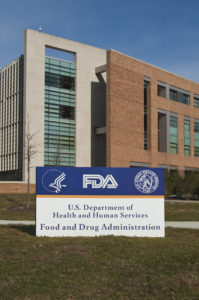By Jill Weisenberger, MS, RDN, CDE, CHWC, FAND

Allulose, also known as D-psicose, is a rare sugar originally discovered naturally in a number of foods such as figs, raisins and maple syrup. It’s about 70% as sweet as sucrose but provides less than 1% of the calories because allulose is not metabolized like other sugars. Instead of being broken down for energy, allulose is largely absorbed and excreted in the urine.
The study titled “Anti-obesity potential of rare sugar D-psicose by regulating lipid metabolism in rats” by Chen et al. investigates the potential of allulose to prevent obesity in an animal model. The researchers prepared five diets based on standard rat chow containing 65.2% carbohydrate with an additional 5% carbohydrate coming from one of these five sources: cornstarch (control diet), allulose, glucose, fructose and cellulose. Chen et al. compared the effects of the carbohydrate-modified diets in rats for four weeks on body weight, lipid profile, antioxidant level and the expression of genes related to lipid metabolism in the liver.
Findings on Body Weight
The rats in the allulose group gained significantly less weight than the animals in any of the other groups, yet their food intake was only significantly lower compared to the cellulose group (and not the other groups). Both the epididymal fat and abdominal fat were also significantly lower in the allulose group. Chen et al. speculate that short-term intake of allulose leads to the least amount of weight gain because of the lower energy value of allulose compared to other carbohydrates.
Findings on Blood Lipids
Allulose supplementation may also benefit the lipid profile. For example, the triglyceride levels of the animals in the allulose group were lower than that of any of the other groups, and significantly lower than the triglyceride levels of the control group. The LDL-cholesterol level of the allulose group was 34.5% lower than that of the control group, and was significantly lower than both the control and glucose groups. Additionally, the free fatty acid level of the allulose group was lower than that of the other four groups and was significantly lower than both the control and cellulose groups.
Findings on Antioxidant Capacities of Liver and Serum
Supplementation of allulose appears to boost catalase activity and improve antioxidant capacity in rats, which may reduce free radical damage within the body. The researchers examined the serum and hepatic levels of both catalase and superoxide dismutase. The levels of the catalase enzyme were significantly higher in the allulose group compared to the other groups. While the serum and hepatic levels of superoxide dismutase were also higher in the allulose group, they were significantly higher only when compared to the serum activity in the fructose group.
Findings on Gene Expression
Chen et al. concluded that allulose supplementation contributes to the smallest body weight increase by inhibiting the expression of genes related to fatty acid synthesis and increasing the expression of genes related to lipolysis. As examples, the expression of both acetyl-coA carboxylase and fatty acid synthase, which are important in fat synthesis, were significantly lower in the allulose group. Furthermore, supplementation of allulose resulted in increased expression of peroxisome proliferator-activated receptors-alpha, which is also important in fatty acid metabolism.
Overall Conclusions: According to Chen et al.’s findings, the consumption of allulose does not cause significant weight increase or disorders of lipid metabolism in rats. Furthermore, supplementation of allulose appears to inhibit fat accumulation, improve blood lipids and increase antioxidant capacity in rats consuming a high carbohydrate diet.

Jill Weisenberger, MS, RDN, CDE, FAND, has worked as both a nutrition counselor and a diabetes educator in the hospital and research settings, and now in private practice in Newport News, VA. Jill is the author of Diabetes Weight Loss – Week by Week and two upcoming books, The Overworked Person’s Guide to Better Nutrition and 21 Things You Need to Know about Diabetes and Your Heart. She is a member of the Academy of Nutrition and Dietetics, the American Association of Diabetes Educators and the American Diabetes Association. Jill is a paid contributor to Sucralose.org. Follow Jill on Twitter @NutritionJill and find more at www.JillWeisenberger.com.







